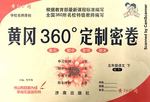题目内容
Maybe you know floods, droughts, earthquakes, sandstorms and so on. But have ever heard of typhoons(台风)?
Typhoons are some of the worst storms, usually around the Pacific Ocean and the South China Sea. Most happen in July, August and September.
How does a typhoon happen? When lots of sea water gets hot in the summer sun, it evaporates into the air. This makes the air hotter. When the air gets warm enough, it starts to move higher up into the sky. Then, cooler air around it rushes in. It fills the space that is left. After the air gets warmer, it starts to move quickly, making wind. The wind goes in circles, and it keeps moving higher in the sky. The warmer the air gets, the quicker the wind moves. And when the wind moves faster than 30 meters a second, a typhoon begins.
A typhoon has two parts, One is called the “eye”. In the eye, the wind does not move so fast. The other part is the wall of clouds around the eye. This is where the strongest with and hardest rains are.
Typhoons are very dangerous. In 2004, Typhoon Yunna killed 164 people in Zhejiang, and 24 people were missing. In May 2006, Typhoon Pearl hit Guangdong and Fujian, and thousands of houses were damaged.
What to do when a typhoon hits:
Stay inside, Close all the windows and stay away from them.
Try to bring all of your things inside. Strong winds could even blow away your bikes!
Listen to the radio or TV for important information.
If you’re told to go to a safer place, do so right away.
小题1: Typhoons often happen
小题2: Which picture can tell the meaning of the underlined sentences“…,it starts to move higher up into the sky. Then, cooler air around it rushes in.”?

小题3: When a typhoon comes, we cannot
小题4: This passage is mainly about
小题5: Which of the following is TRUE according to the passage?
Typhoons are some of the worst storms, usually around the Pacific Ocean and the South China Sea. Most happen in July, August and September.
How does a typhoon happen? When lots of sea water gets hot in the summer sun, it evaporates into the air. This makes the air hotter. When the air gets warm enough, it starts to move higher up into the sky. Then, cooler air around it rushes in. It fills the space that is left. After the air gets warmer, it starts to move quickly, making wind. The wind goes in circles, and it keeps moving higher in the sky. The warmer the air gets, the quicker the wind moves. And when the wind moves faster than 30 meters a second, a typhoon begins.
A typhoon has two parts, One is called the “eye”. In the eye, the wind does not move so fast. The other part is the wall of clouds around the eye. This is where the strongest with and hardest rains are.
Typhoons are very dangerous. In 2004, Typhoon Yunna killed 164 people in Zhejiang, and 24 people were missing. In May 2006, Typhoon Pearl hit Guangdong and Fujian, and thousands of houses were damaged.
What to do when a typhoon hits:
Stay inside, Close all the windows and stay away from them.
Try to bring all of your things inside. Strong winds could even blow away your bikes!
Listen to the radio or TV for important information.
If you’re told to go to a safer place, do so right away.
小题1: Typhoons often happen
| A.in the hot season | B.in the cold season |
| C.only in China | D.under the sea |

小题3: When a typhoon comes, we cannot
| A.close all the windows | B.listen to typhoon news |
| C.stay outside with our bikes | D.stay inside the strong house |
| A.the knowledge of typhoon | B.the eye of a typhoon |
| C.the most dangerous typhoon Yunna | D.the names of typhoon |
| A.The warmer the air gets, the slower the wind moves. |
| B.In 2006, Typhoon Peal killed 164 people in Zhejiang. |
| C.The strongest winds and harder rains are in the eye of typhoon. |
| D.A typhoon will happen when the wind goes faster than 30 meters a second. |
小题1:A
小题2:B
小题3:C
小题4:A
小题5:D
试题分析:这篇短文主要分析了台风的形成过程及台风中我们的应对措施。
小题1:细节理解题。根据短文第二段Typhoons are some of the worst storms, usually around the Pacific Ocean and the South China Sea.描述,可知台风多发生于海上。故选。A
小题2:段落大意题。理解句意可知本句话指的是,当空气温度上升时,它开始向天空高处移动。然后,他周围温度更低的空气补充进来。根据描述,可知与图片B描述一致,故选B
小题3:细节理解题。根据Stay inside, close all the windows and stay away from them.描述,可知台风来时,我们不能呆在户外。故选C。
小题4:主旨大意题。阅读短文可知,本文主要给我们讲述了一些关于台风的知识,故选A。
小题5:细节理解题。根据短文第三段And when the wind moves faster than 30 meters a second, a typhoon begins.描述,可知当风速超过30千米每小时时,台风就会发生。故选D。

练习册系列答案
 超能学典单元期中期末专题冲刺100分系列答案
超能学典单元期中期末专题冲刺100分系列答案 黄冈360度定制密卷系列答案
黄冈360度定制密卷系列答案 阳光考场单元测试卷系列答案
阳光考场单元测试卷系列答案 名校联盟冲刺卷系列答案
名校联盟冲刺卷系列答案
相关题目